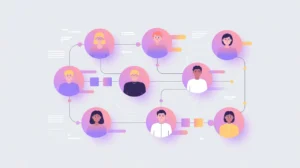Importance of Standards Bodies and Protocols
Standards Bodies and Protocols define and regulate the technical, ethical, and operational frameworks that guide how AI and digital systems are built and used. Standards bodies, such as ISO, IEEE, or W3C, develop global norms, while protocols are the agreed-upon rules that ensure interoperability across systems. Their importance today lies in shaping trust, safety, and fairness in a rapidly evolving AI ecosystem, where consistency and accountability are critical.
For social innovation and international development, standards bodies and protocols matter because mission-driven organizations operate across borders and depend on shared norms. Clear standards enable systems for health, education, and humanitarian work to interoperate while ensuring that ethical and inclusive practices are embedded in AI deployment.
Definition and Key Features
Standards bodies operate by convening experts, industry stakeholders, and governments to develop voluntary or mandatory frameworks. These can cover topics such as AI ethics, data privacy, interoperability, or cybersecurity. Protocols, meanwhile, establish how systems communicate, such as HTTP for the web or emerging AI protocols for model sharing and accountability.
They are not the same as laws, which are enforced by governments. Nor are they equivalent to company-specific guidelines, which lack the global reach and consensus of formal standards. Standards bodies and protocols provide structured, widely recognized foundations that help align diverse actors.
How this Works in Practice
In practice, standards bodies publish specifications that developers and organizations adopt to ensure compatibility and compliance. Protocols translate these into technical rules that systems follow automatically. For example, data interoperability standards allow health records to be exchanged across systems, while AI ethics standards provide benchmarks for fairness and transparency. Active participation in standards bodies also allows organizations to influence how global frameworks evolve.
Challenges include the slow pace of consensus, the dominance of well-resourced actors who may shape standards in their favor, and the difficulty of applying global norms to highly local contexts. For smaller mission-driven organizations, navigating standards can be resource-intensive, yet alignment is often necessary for credibility and interoperability.
Implications for Social Innovators
Standards bodies and protocols are central to mission-driven digital ecosystems. Health initiatives depend on data-sharing protocols and privacy standards to manage patient information across borders. Education systems rely on interoperability standards for learning platforms and digital content. Humanitarian agencies use geospatial and crisis-data protocols to coordinate with governments and partners during emergencies. Civil society groups engage with standards to advocate for human rights, equity, and accountability in global AI governance.
By aligning with standards bodies and protocols, organizations can ensure that their systems are interoperable, trustworthy, and resilient, while contributing to the shaping of inclusive global norms.







